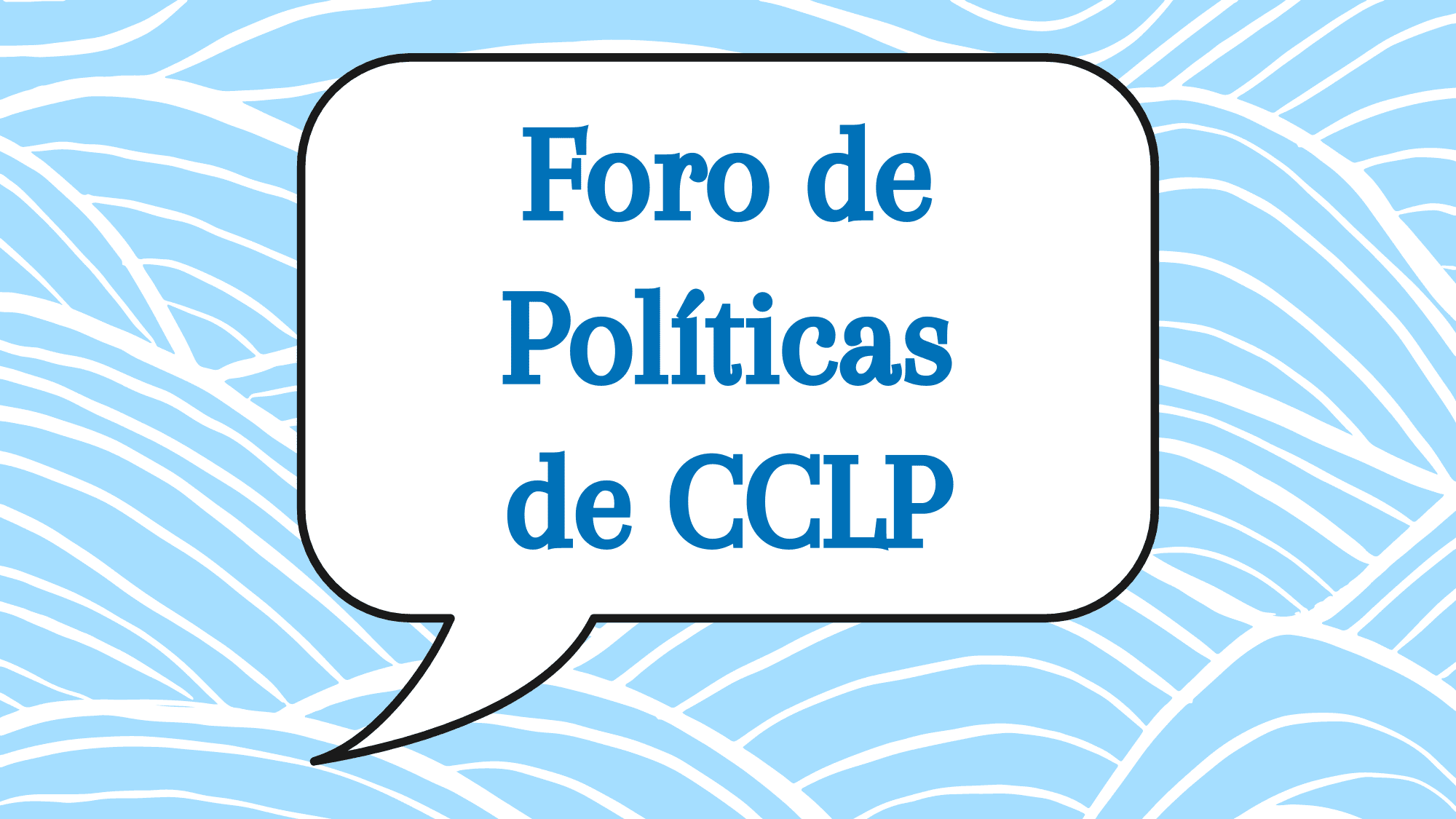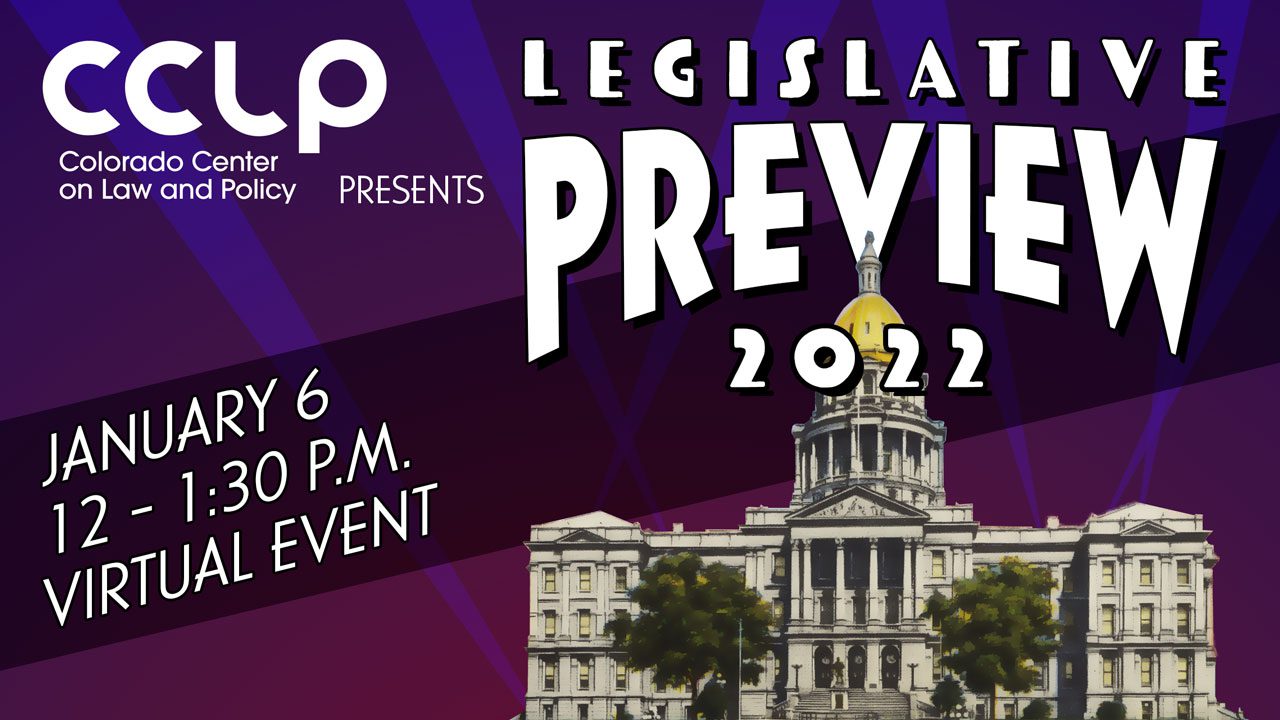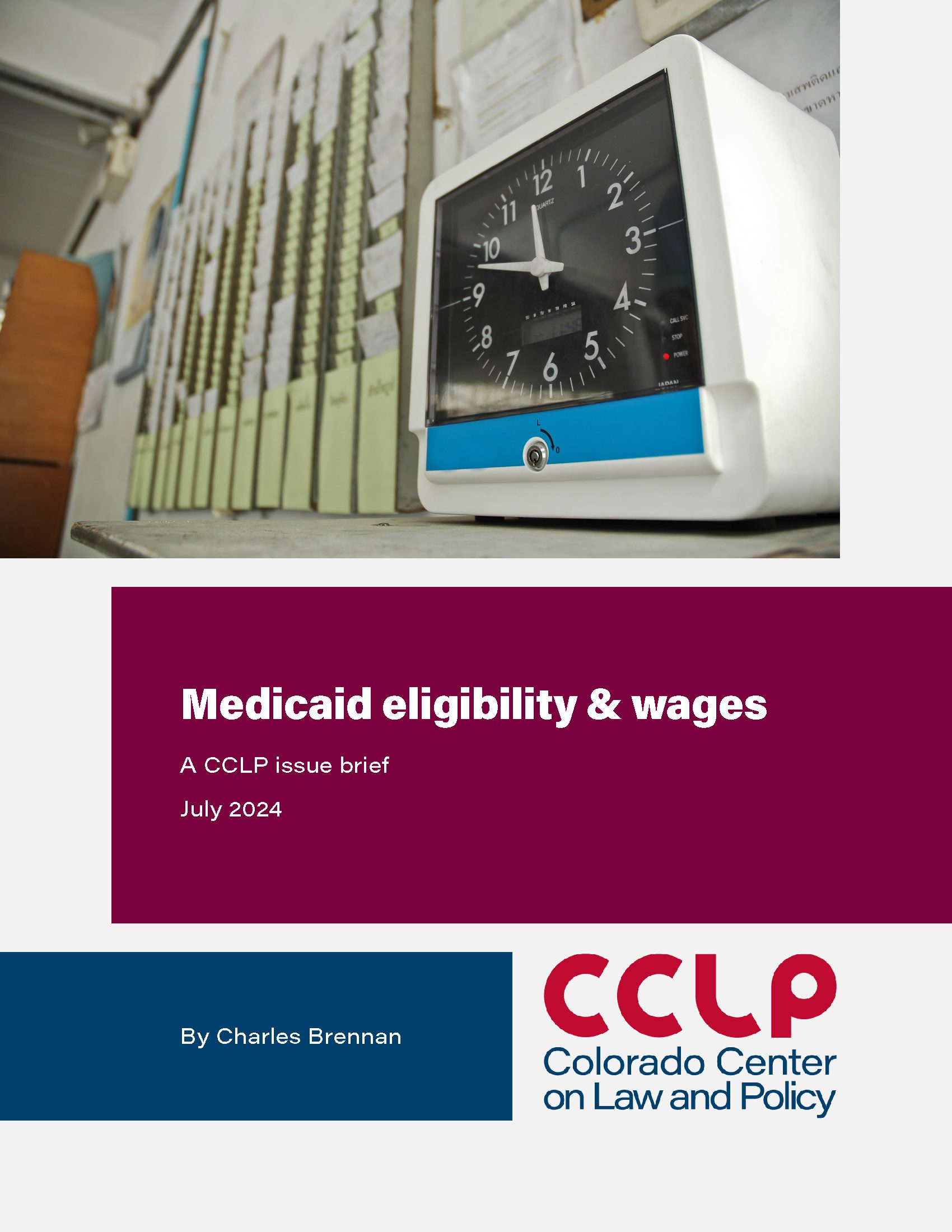 white background with a text bubble stating "CCLP Policy Forum"" width="2000" height="1125" />
white background with a text bubble stating "CCLP Policy Forum"" width="2000" height="1125" /> white background with a text bubble stating "CCLP Policy Forum"" width="2000" height="1125" />
white background with a text bubble stating "CCLP Policy Forum"" width="2000" height="1125" />
Join us on September 24, 2024 at 5pm, for a lively discussion on how tax credits work to benefit a variety of Colorado residents.
Únete a nosotros el 24 de septiembre de 2024 a las 17:00, para una animada discusión sobre cómo los créditos fiscales funcionan para beneficiar a diversos residentes de Colorado.
 white background with a text bubble stating in Spanish "Foro de Políticas CCLP"" width="2000" height="1125" />
white background with a text bubble stating in Spanish "Foro de Políticas CCLP"" width="2000" height="1125" />
CCLP celebrated our 26th birthday party while reflecting on another year of successes on behalf of Coloradans experiencing poverty.
CCLP partnered with the city and county of Denver to administer a two-year program connecting Denver’s historically underinvested businesses with guides to programs, resources, and services available to them.
Colorado health advocates presented to the Joint Budget Committee on glitch-plagued Public Health Emergency Unwind.
We focus on securing access to food, health, housing and income to build a more equitable state.
![]()
![]()
![]()
![]()
Through research and policy analysis, legislative and legal advocacy and coalition building, we advocate to remove barriers that prevent Coloradans from meeting their basic needs and becoming self-sufficient.
We inform the policy dialogue by understanding Coloradans’ challenges and identifying solutions.
We build support for policies that make a difference for families with low incomes.
We pursue legal action when the system fails those who lack resources.
We nourish and cultivate strong and effective partnerships throughout Colorado.















We depend on support from individuals to help us improve economic security and access to health care.
Obtaining the basic skills needed to pursue training and education
789 N. Sherman Street, Suite 300
Denver CO, 80203
Call: 303-573-5669
Fax: 303-496-7910
CCLP stands with diverse communities across Colorado in the fight against poverty through research, legislation and legal advocacy.
CCLP is a four-star charity, 5 years running!
Sign up for our monthly newsletter HeadsUp for CCLP news, events and updates from across the state!
© 2023 Colorado Center on Law and Policy
Health First Colorado is the name given to Colorado’s Medicaid program. Medicaid provides public, low-cost health insurance to qualifying adults and children. It is an entitlement program funded by the federal, state, and county governments and is administered by counties in Colorado. Those who are required to pay must pay a small co-pay when receiving certain health care services.
State Department: Department of Health Care Policy and Financing
Eligibility: Most adults 18 to 64 are eligible for Medicaid in Colorado if their household income is at or below 133% of the federal poverty limit (FPL). Pregnant women are eligible with incomes of up to 195% FPL, while children under 18 may be eligible if the live in a household with income at or below 142% FPL. Some adults over 65 may also be eligible for Medicaid.
Program Benefits: Through Medicaid, low-income Coloradans are eligible for a range of health care services at little to not cost. Services provided include doctors visits, prescription drugs, mental health services, and dental care. Co-pays for certain individuals may be needed for certain services.
Program Funding and Access: Colorado funds our Medicaid program through state and federal dollars. Medicaid is an entitlement program, which means that all who are eligible for Medicaid can access the program, regardless of the funding level in a given year. This does not mean that it is always easy to access Medicaid, even when eligible. And since the program is administered by counties, funding levels for county staff and other administrative roles can make it easier or harder for Coloradans to access the program. On top of this, not all medical providers accept Medicaid which limits the ability of Coloradans to seek health services even if enrolled, such as if the nearest provider is a 2+ hour drive away.
Note: This data is from before the pandemic and does not reflect changes in enrollment rules during the COVID-19 pandemic and public health emergency.
Statewide Program Access 2015-19: Over the study period of this report, an average of 89.0% of the population at or below 133% of FPL (i.e., the population who is likely to be eligible for Medicaid) were enrolled in Medicaid in Colorado.
The Supplemental Nutrition Assistance Program or SNAP helps low-income Coloradans purchase food by providing individuals and families with a monthly cash benefit that can be used to buy certain foods. SNAP is an entitlement program that is funded by the federal and state governments and administered by counties in Colorado.
State Department: Department of Human Services
Eligibility: Currently, Coloradans qualify for SNAP if they have incomes below 200% FPL, are unemployed or work part-time or receive other forms of assistance such as TANF, among other eligibility criteria. Income eligibility for SNAP was different during the study period of this report than today—it was 130% FPL back in 2019 for example. The US Department of Agriculture uses the population at or below 125% FPL when calculating the Program Access Index (or PAI) for SNAP. We follow this practice in our analysis despite Colorado currently having a higher income eligibility threshold.
Program Benefits: SNAP participants receive a monthly SNAP benefit that is determined by the number of people in their household and their income. Benefit amounts decrease as income increases, helping households avoid a sudden loss of SNAP when their incomes increase, even by a minor amount. Benefits are provided to an Electronic Benefit Transfer (EBT) card that can be used to purchase eligible food items, such as fruits and vegetables; meat, poultry, and fish; dairy products; and breads and cereals. Other items, such as foods that are hot at their point of sale, are not allowable purchases under current SNAP rules.
Program Funding and Access: SNAP, like Medicaid, is a federal entitlement program. This means that Colorado must serve any Coloradan who is eligible for the program. As such, funding should not be a limit to how many Coloradans can be served by the program. However, funding for administration of SNAP at the state and county level can limit the ability of county human service departments to enroll those who are eligible. Other program rules and administrative barriers can make it difficult for Coloradans to receive the benefits they are legally entitled to receive.
Statewide Program Access 2015-19: Over the study period of this report, an average of 61.1% of the population at or below 125% of FPL (i.e., the population who is likely to be eligible for SNAP) were enrolled.
The Special Supplemental Nutrition Program for Women, Infants, and Children, also know as WIC, provides healthcare and nutritional support to low-income Coloradans who are pregnant, recently pregnant, breastfeeding, and to children under 5 who are nutritionally at risk based on a nutrition assessment.
State Department: Department of Public Health and Environment
Eligibility: To participate in WIC you must be pregnant, pregnant in the last six months, breastfeeding a baby under 1 year of age, or a child under the age of 5. Coloradans do not need to be U.S. citizens to be eligible for WIC. In terms of income, households cannot have incomes that exceed 185% FPL. Families who are enrolled in SNAP, TANF, Food Distribution Program on Indian Reservations (FDPIR), or Medicaid are automatically eligible for WIC. Regardless of gender, any parents, foster parents, or caregivers are able to apply for and use WIC services for eligible children.
Program Benefits: WIC provides a range of services to young children and their parents. These include funds to purchase healthy, fresh foods; breastfeeding support; personalized nutrition education and shopping tips; and referrals to health care and other services participants may be eligible for.
Program Funding and Access: WIC is funded by the US Department of Agriculture. The state uses these federal funds to contract with local providers, known as WIC Clinics. In most cases, these are county public health agencies, but that is not the case in all Colorado counties. Some WIC Clinics cover multiple counties, while others are served by multiple clinics. Private non-profit providers are also eligible to be selected as a WIC Clinic.
Statewide Program Access 2015-17: Between 2015 and 2017, an average of 52.2% of the population eligible for WIC were enrolled in the program in Colorado.
Colorado Works is the name given to Colorado’s program for Temporary Assistance to Needy Families or TANF. It is an employment program that supports families with dependent children on their path to self-sufficiency. Participants can receive cash assistance, schooling, workforce development and skills training depending on the services available in their county.
State Department: Department of Human Services
Eligibility: In general, Coloradans are eligible to enroll in TANF if they are a resident of Colorado, have one or more children under the age of 18 or pregnant, and have very low or no income. For example, to be eligible to receive a basic cash assistance grant through TANF, a single-parent of one child could not earn more than $331 per month, with some exclusions—and would only receive $440 per month (as of 2022). That said, there are other services provided by counties through TANF that those with incomes as high as $75,000 may be eligible for. In addition to these, participants in TANF are required to work or be pursuing an eligible “work activity” or work-related activity. Any eligible individual can only receive assistance if they have not previously been enrolled in TANF for a cumulative amount of time of more than 60 months—this is a lifetime limit that does not reset. Counties may have additional requirements and offer benefits that are not available in other counties in Colorado.
Program Benefits: While the exact benefits that one is eligible for under TANF can vary, all qualified participants are eligible to receive a monthly cash payment, call basic cash assistance. Other than cash assistance, counties are have a lot of choice in how to use their TANF funding; generally a use of TANF funds is appropriate so long as it advances one or more of the four purposes of the program: (1) provide assistance to needy families so that children can be cared for in their own homes or in the homes of their relatives; (2) end the dependence of needy families on government benefits by promoting job preparation, work, and marriage; (3) prevent and reduce the incidence of out-of-wedlock pregnancies; and (4) encourage the formation and maintenance of two-parent families.
It is important to note that those eligible for TANF are also eligible for many of the other programs we’ve included in this report, such as SNAP, Medicaid, and CCCAP.
Program Funding and Access: Colorado funds its TANF program through funds received from the federal government through the Temporary Assistance for Needy Families block grant. Most of the federal funds are allocated by the state to counties, which are required to provide a 20% match of state funding. Federal and state rules allow the state and counties to retain a portion of unspent funds in a TANF reserve.
Statewide Program Access 2015-19: Over the study period of this report, an average of 50.7% of the population at or below 100% of FPL (i.e., the population who is likely to be eligible for TANF) were enrolled in TANF in Colorado.
The Colorado Child Care Assistance Program provides child care assistance to low-income families and caregivers living in Colorado in the form of reduced payments for child care. It is a program funded by the federal, state, and county governments and is administered by counties in Colorado. The share owed by parents/caregivers is determined on a sliding scale based on the family’s income.
State Department: Department of Early Childhood Education
Eligibility: Counties set eligibility for families separately, but must serve families with incomes at or below 185% of the Federal Poverty Limit. Families accepted to the program are no longer eligible once their income exceeds 85% of the state median income. Parents or caregivers must be employed, searching for work, or engaged in another approved activity to be eligible for CCCAP. Parents and caregivers enrolled in Colorado Works (Temporary Assistance to Needy Families or TANF) or in the child welfare system are also eligible to participate in CCCAP. Generally, CCCAP serves families with children under 13, although children as old as 19 may be eligible under certain circumstances.
Program Benefits: If a family is eligible for CCCAP and has income, they may likely have to pay a portion of their child’s or children’s child care costs each month. The amount that families owe is based on their gross income, number of household members, and the number of children in child care in the household. As such, households tend not to experience a benefit cliff with CCCAP when they see their incomes increase
Program Funding and Access: Colorado funds the CCCAP program using federal dollars it receives from the Child Care and Development Block Grant program. The state allocates federal and state funds to counties using a formula that takes into account factors like current caseloads and the number of eligible residents. Assistance is available until the county’s funds are spent, so the number of families that can be served is often a function of how much funding is available and the income and composition of the household that applies. It is not uncommon for counties to overspend or underspend their allocations of funds. The state reallocates unspent funds from counties who underspent to those who overspent. While underspending could indicate a problem with the way a county administers its CCCAP program, it could just as likely be a sign that there are few providers in the county who participate in CCCAP—or a lack of providers generally.
Statewide Program Access 2015-19: Over the study period of this report, an average of 10.8% of the population at or below 165% of FPL and younger than age 13 (i.e., the population who is likely to be eligible for CCCAP) were enrolled in CCCAP.
The US Department of Housing and Urban Development (HUD) has three housing assistance programs that we look at together: Housing Choice Vouchers (Section 8), Project-based Section 8, and Public Housing. In Colorado, these programs provided assistance to over 90% of the households who received federal housing assistance from all HUD programs. Through federally funded, local or regional public housing agencies (PHAs) are the agencies that administer these programs, through not all are available in all counties. These are not the only programs available in Colorado that assist households afford the cost of housing, such as units funded through federal and state tax credit programs.
State Department: Department of Local Affairs
Eligibility: Generally, households with incomes under 50% of the area median income (AMI) of the county they live in are eligible for these rental assistance programs, although PHAs have discretion to select households with incomes at higher percentages of AMI. That said, HUD requires that 75% of new vouchers issued through the Housing Choice Voucher/Section 8 program in a given year are targeted to households with incomes at or below 30% of AMI. PHAs are also able to create criteria that give priority to certain types of households who are on waiting lists for these programs.
Program Benefits: These rental assistance programs help households afford the cost of housing by reducing their housing costs to around 30% of their household income. In the case of the Housing Choice Voucher program, the PHA pays the voucher holder’s landlord the remaining portion of the rent.
Program Funding and Access: Funding and access are both challenges for these rental assistance programs. In addition to limitations on the number of public housing units or housing vouchers a PHA can manage or issue, lack of funding compared to the need constrains the ability of PHAs to assist low-income households. In 2020, Coloradans were on waitlists for Housing Choice Vouchers for an average of 17 months. Waitlists also exist for the other rental assistance programs.
Statewide Program Access 2015-19: Over the study period of this report, an average of 21.1% of renter households with incomes at or below 50% AMI (i.e., the population who is likely to be eligible for HUD rental assistance programs) were living in subsidized housing.